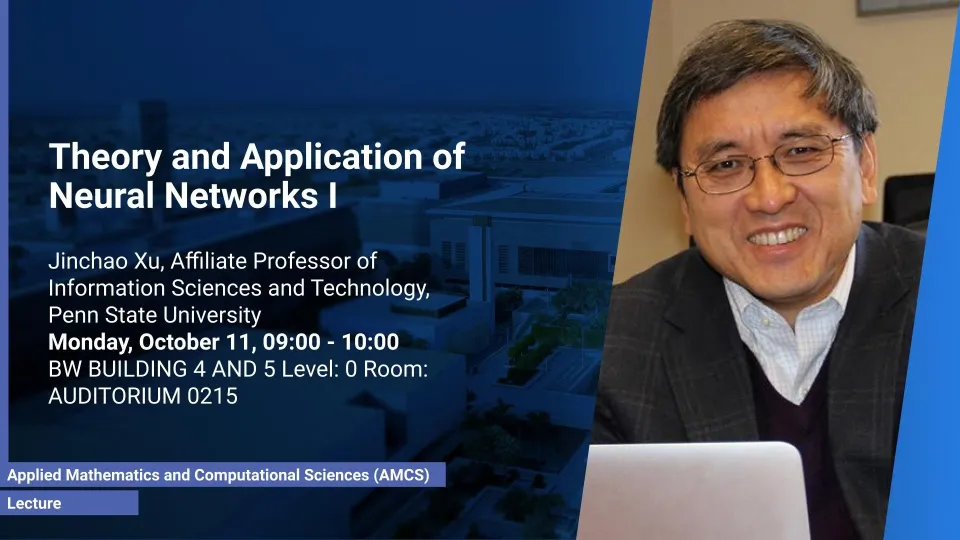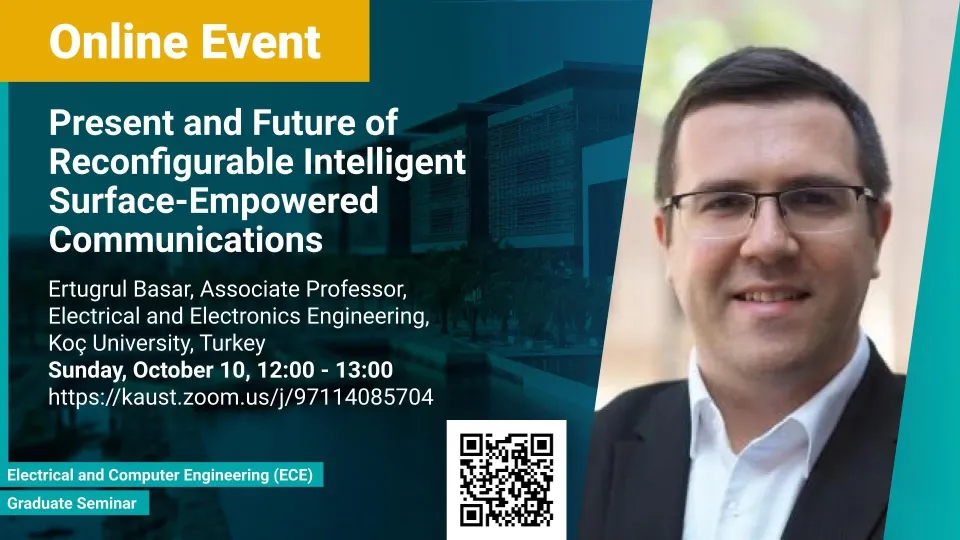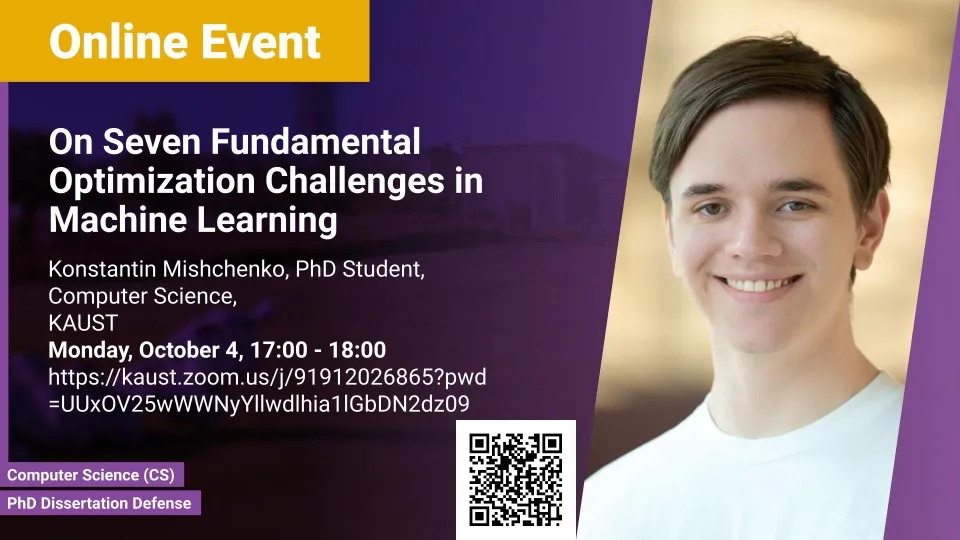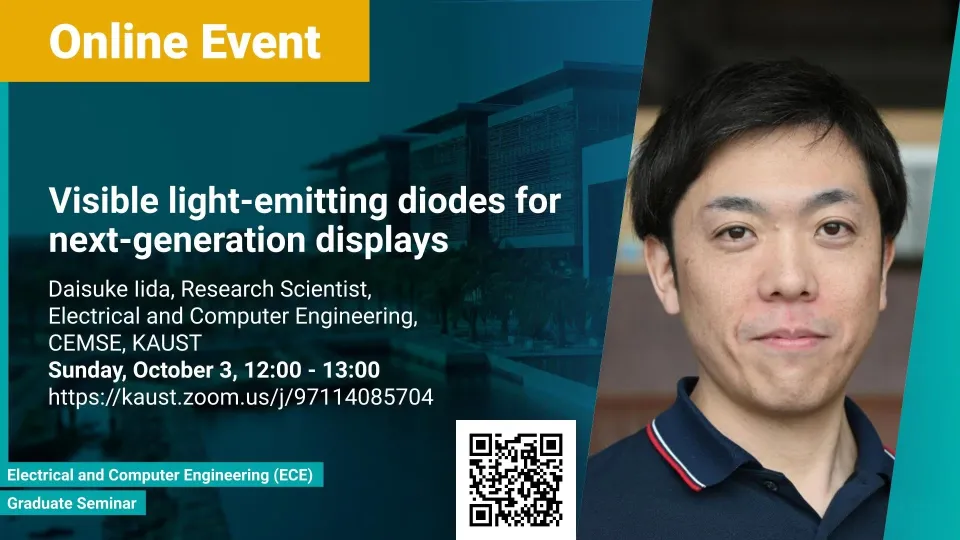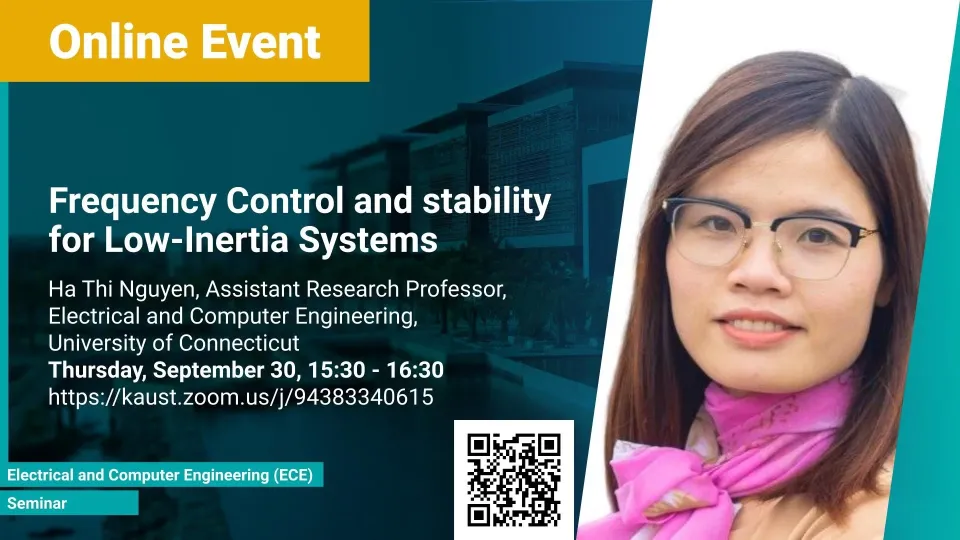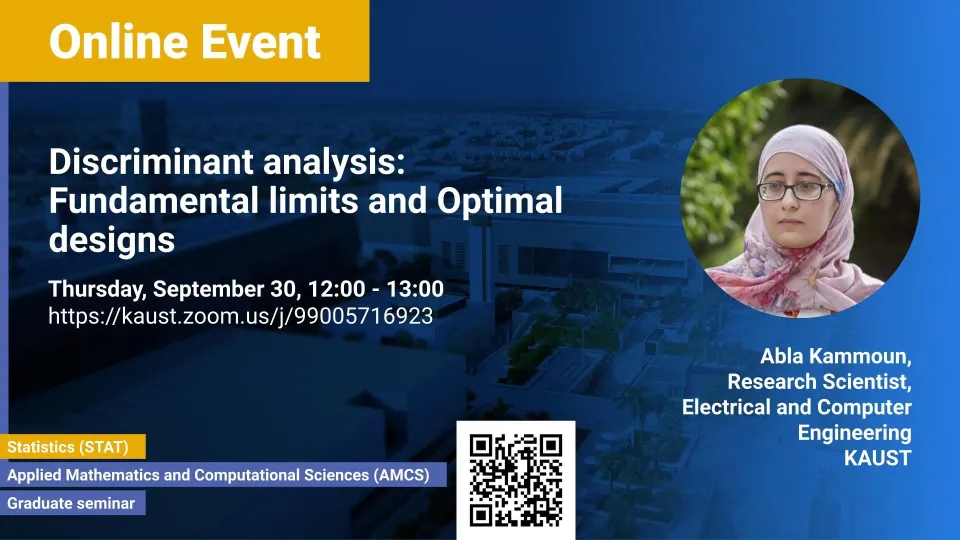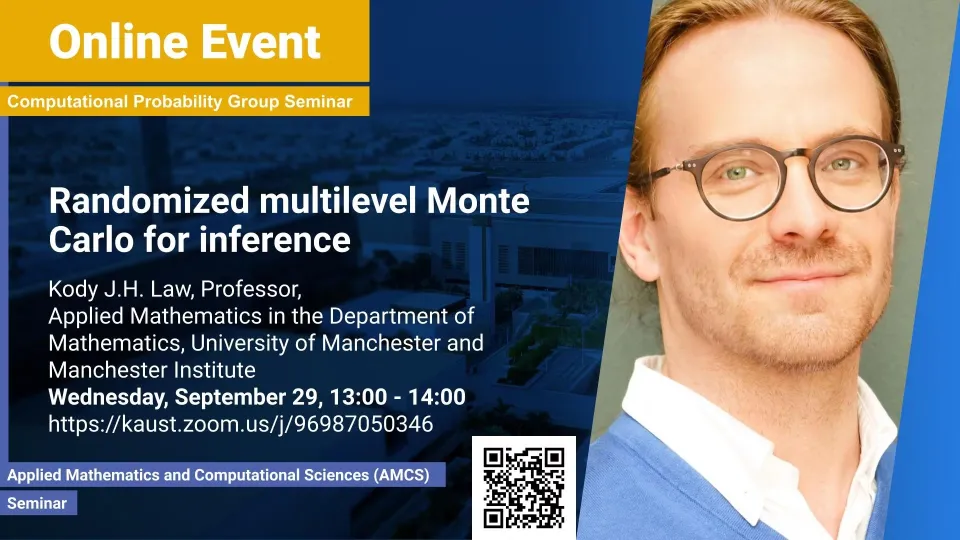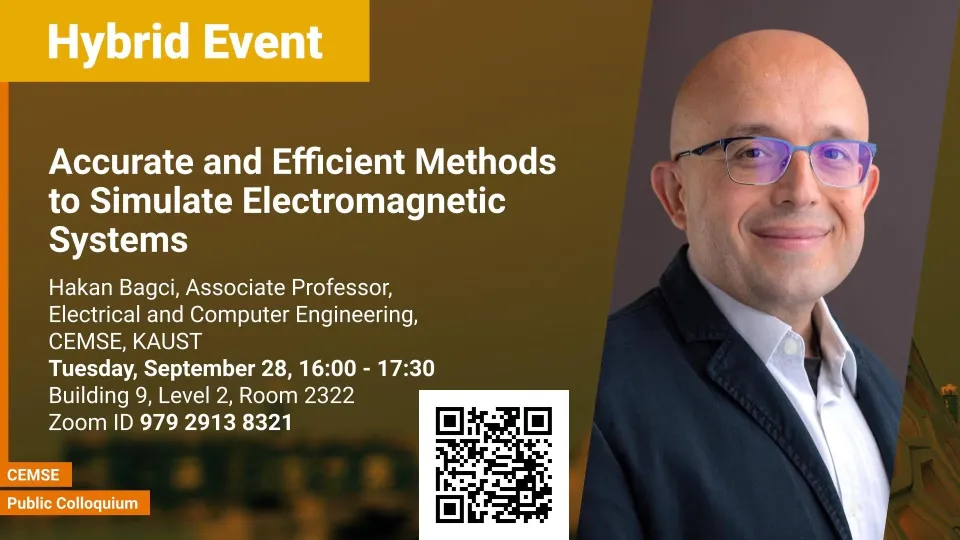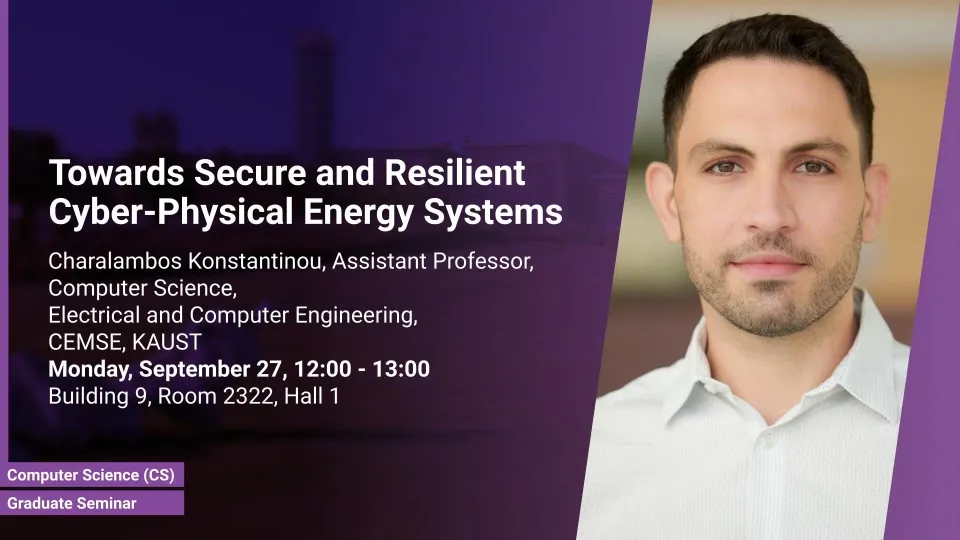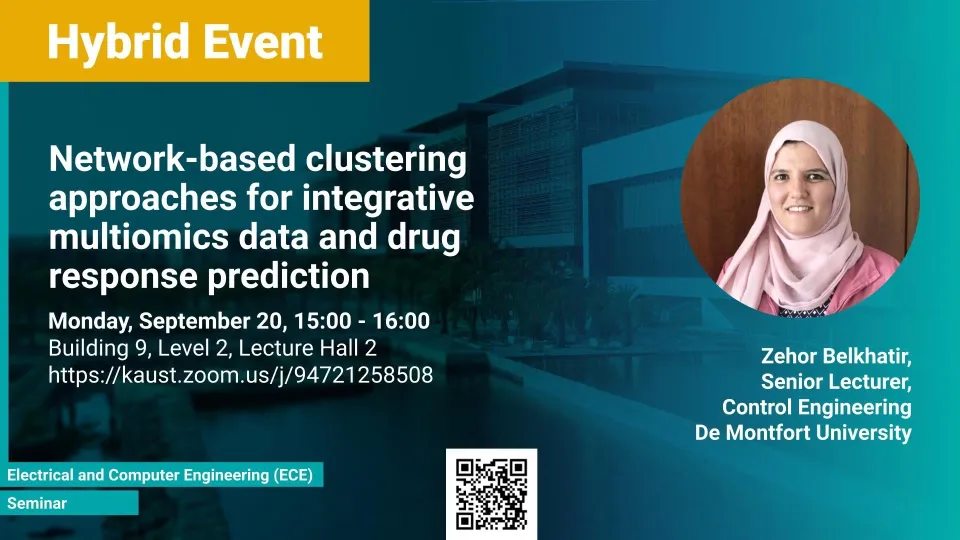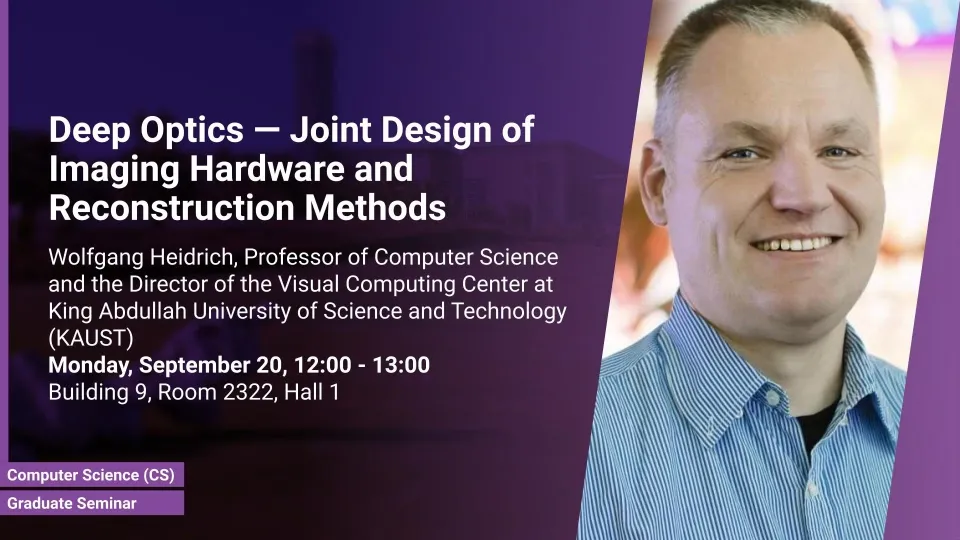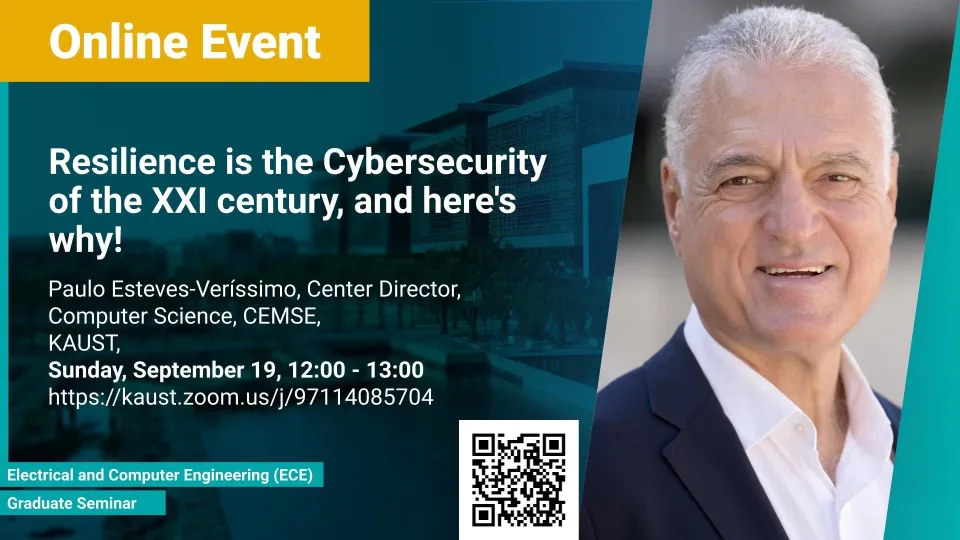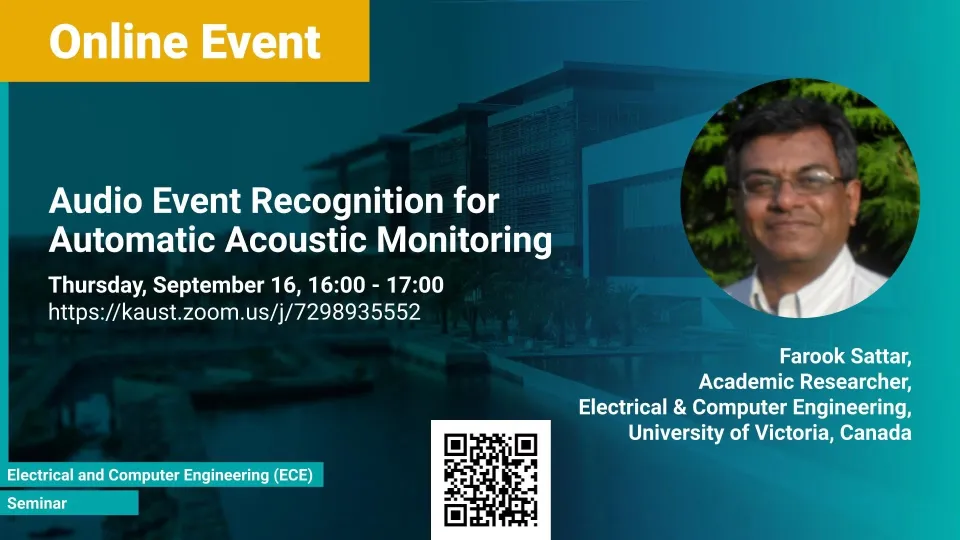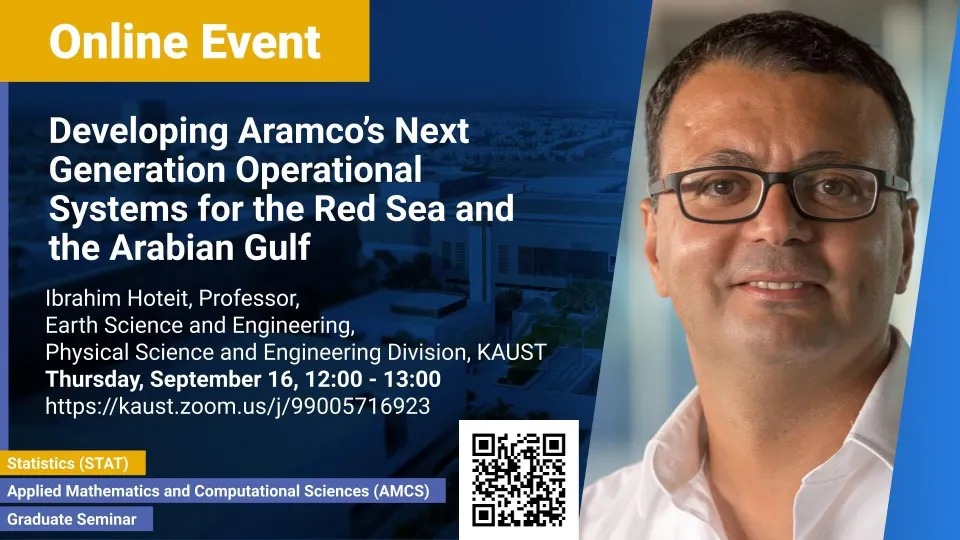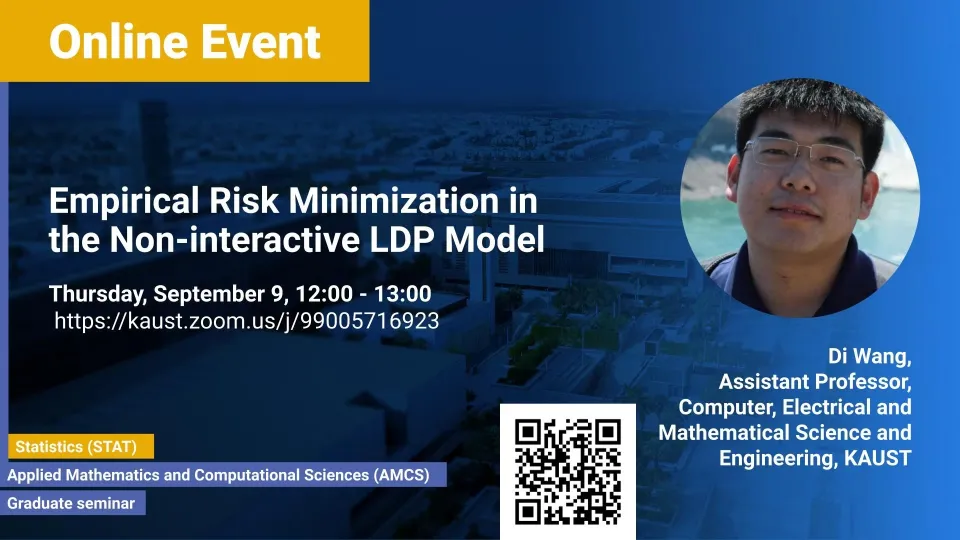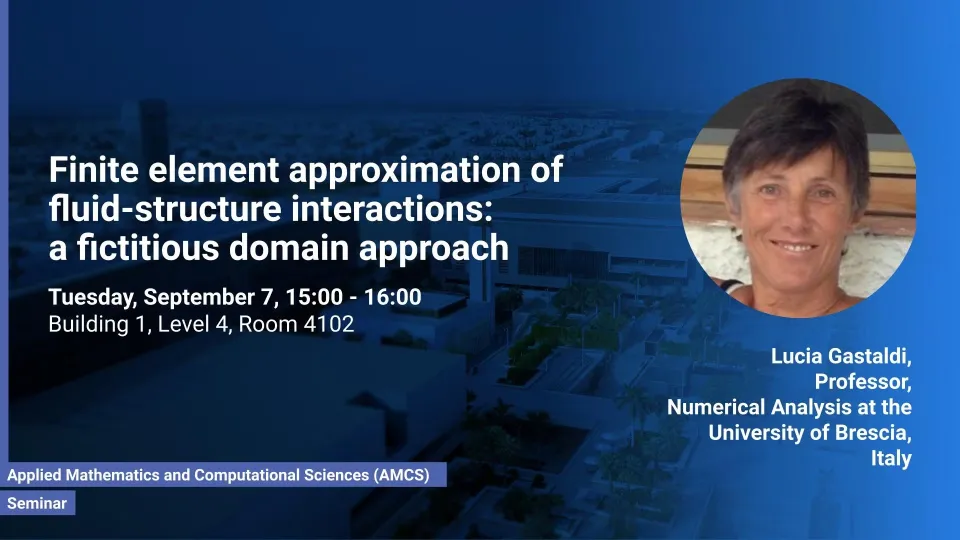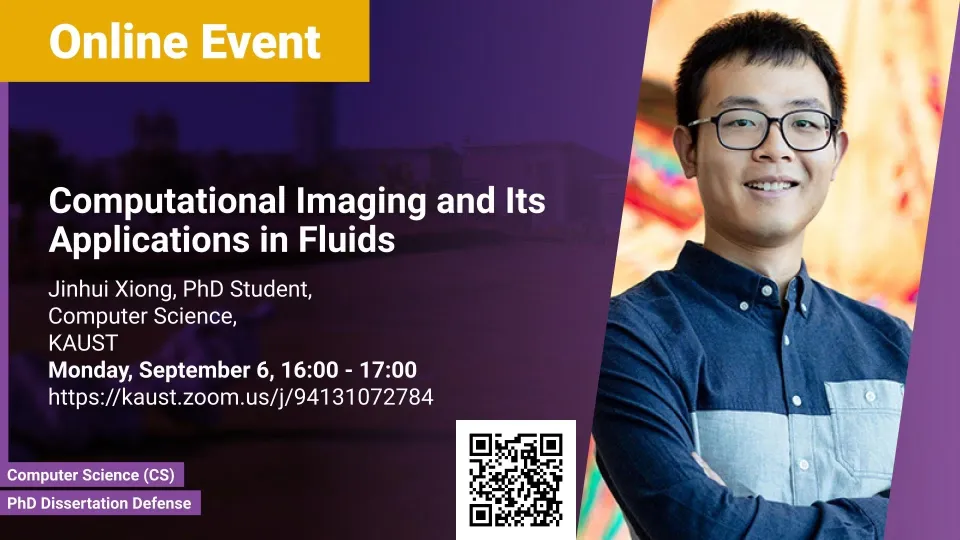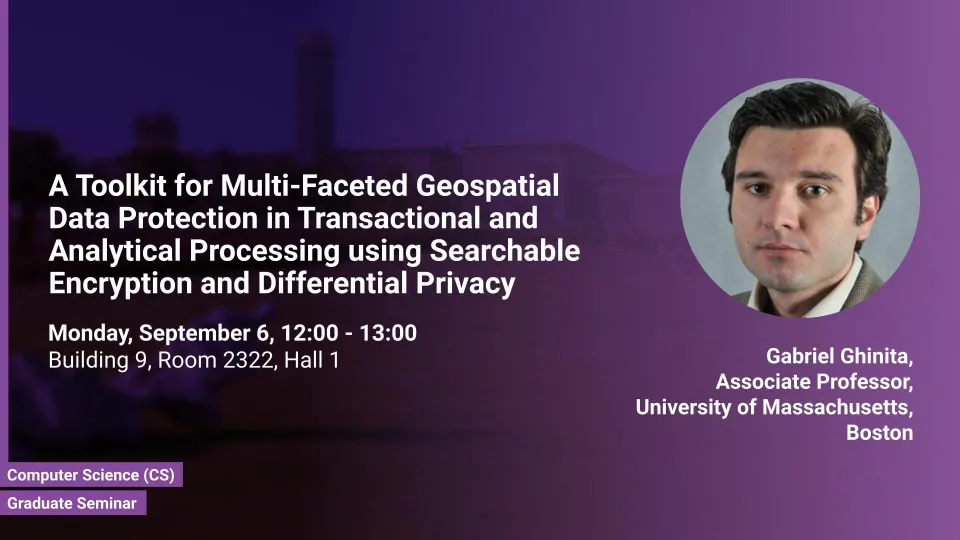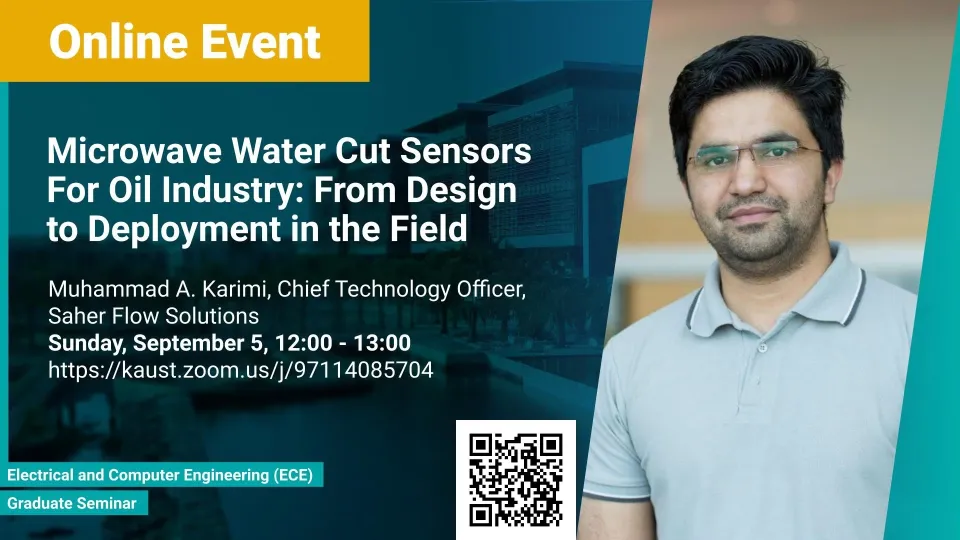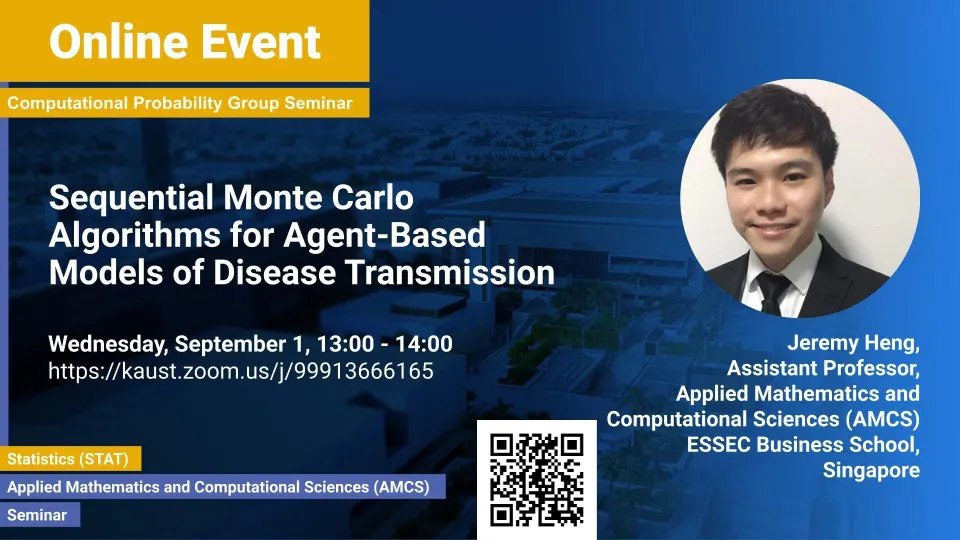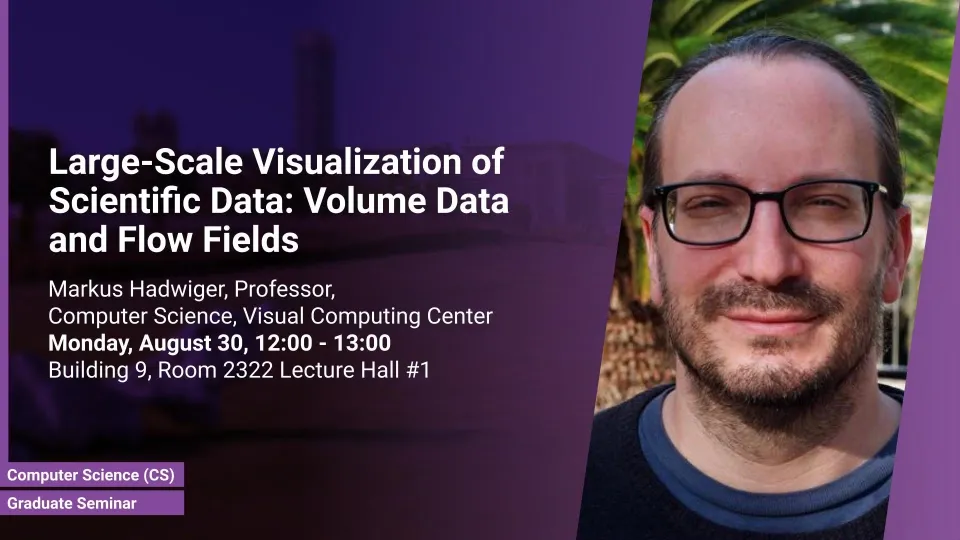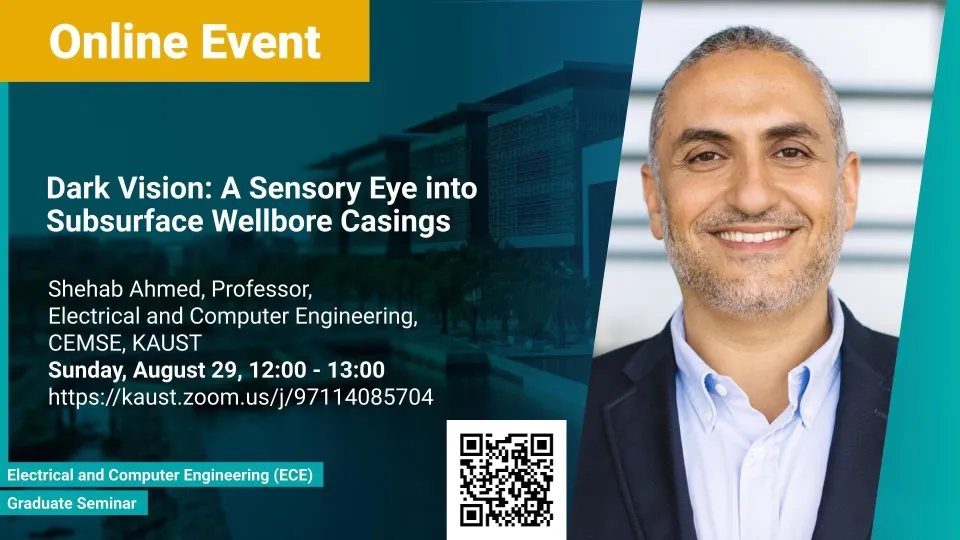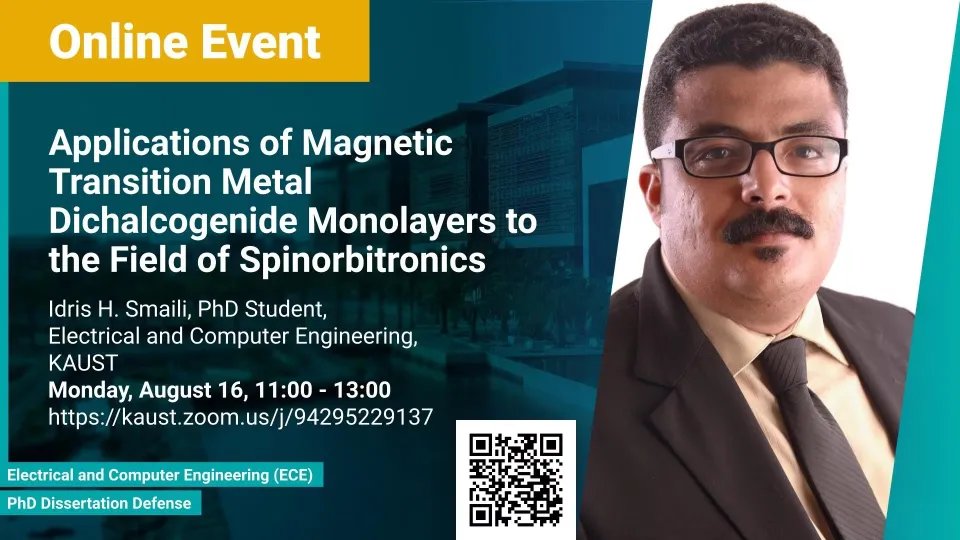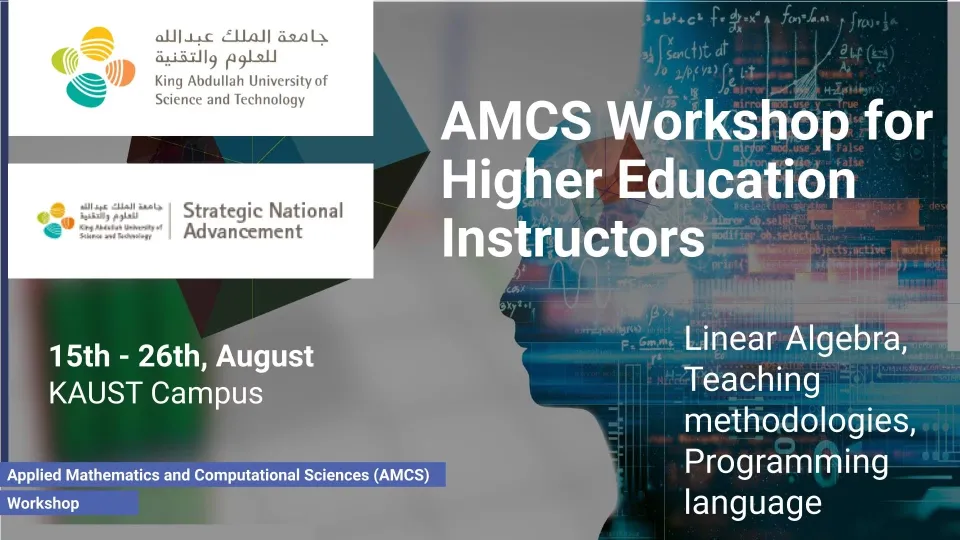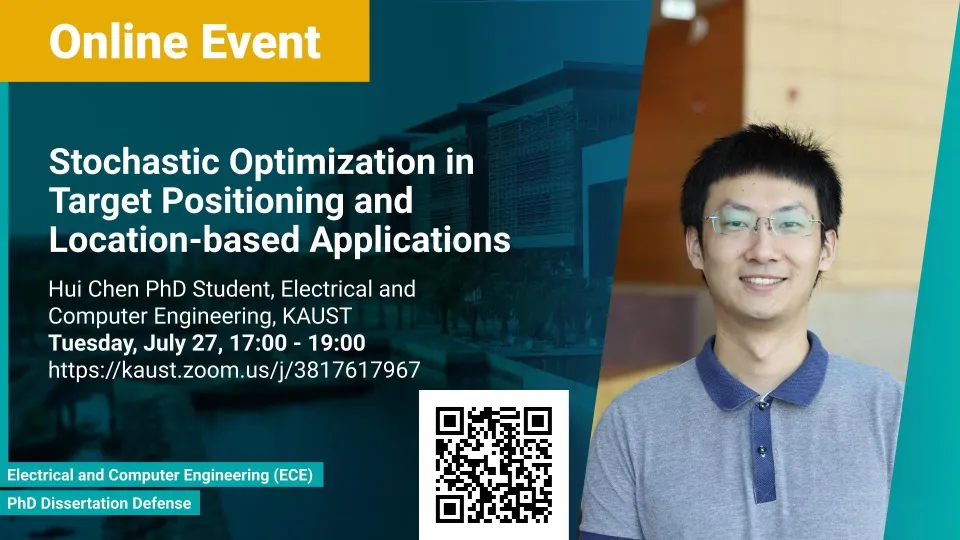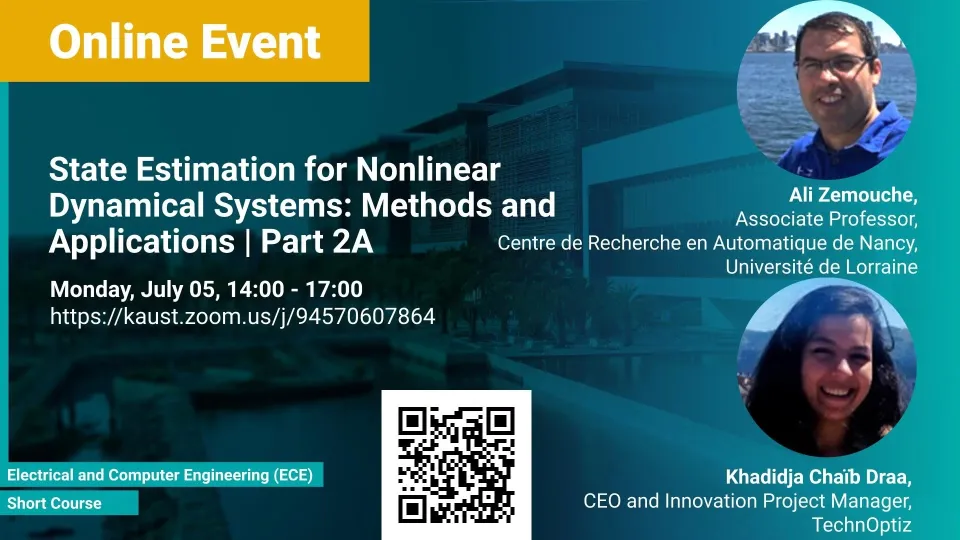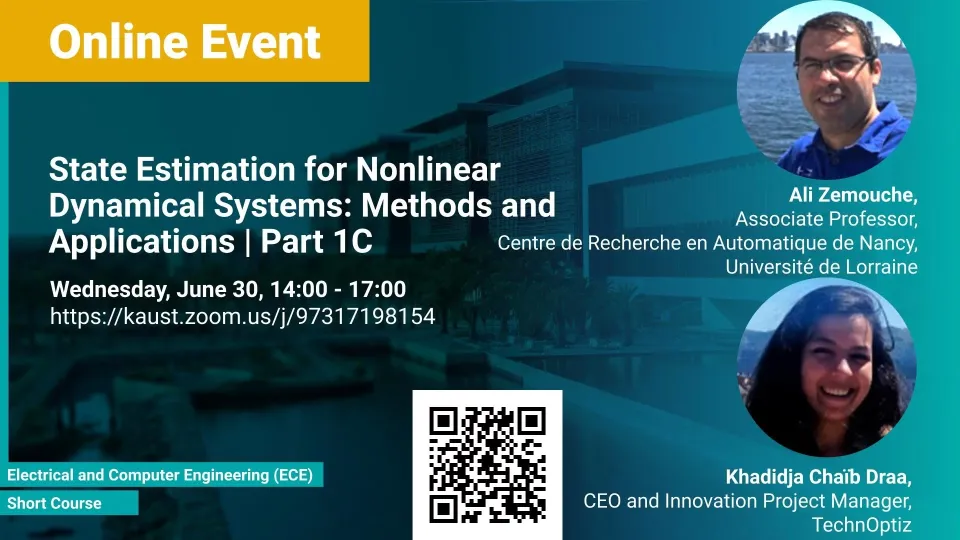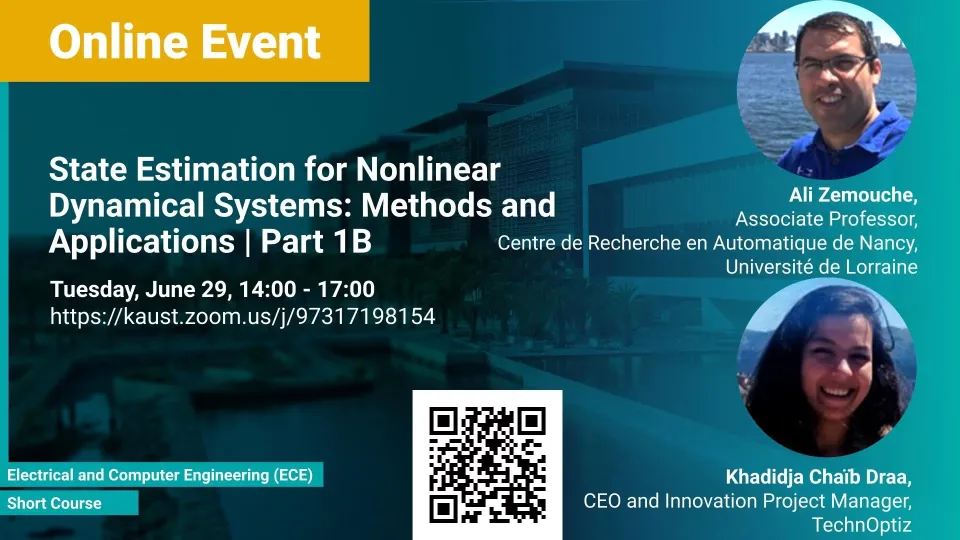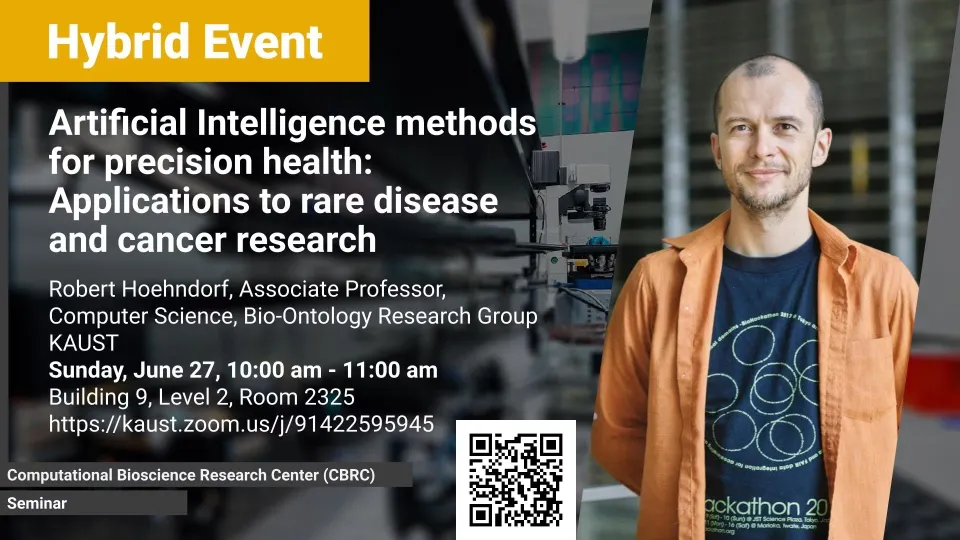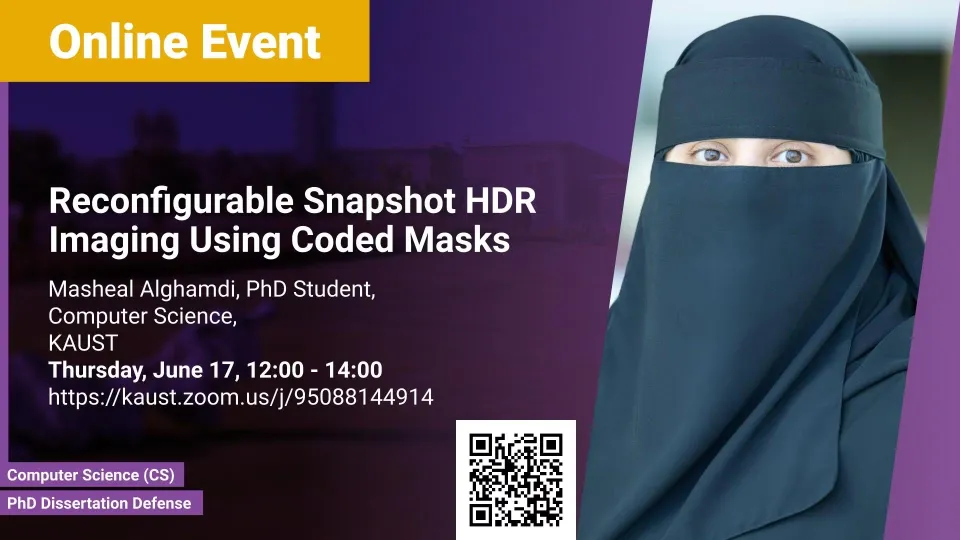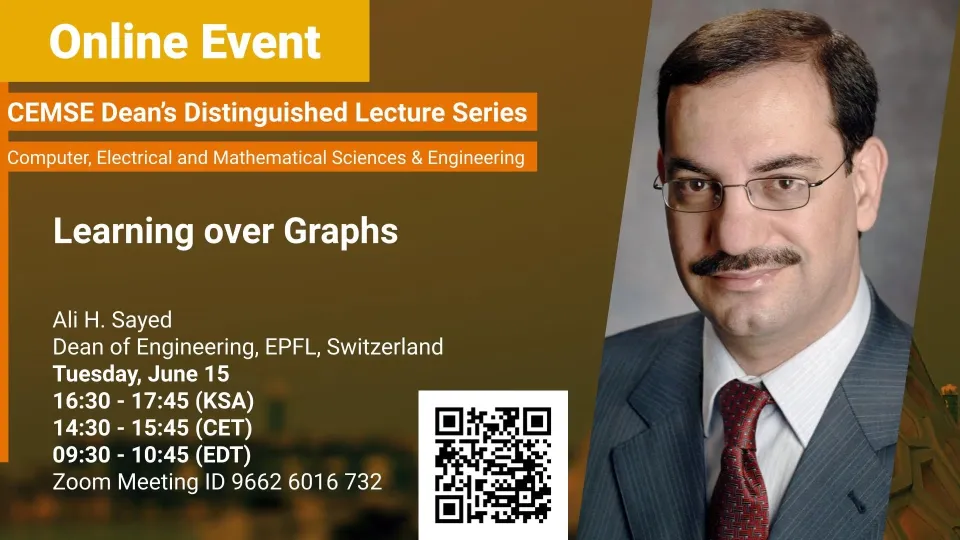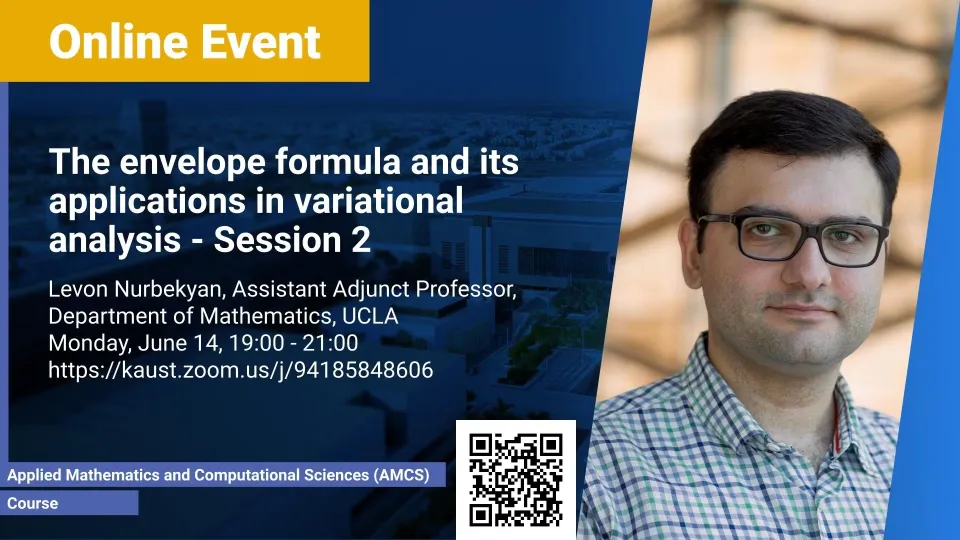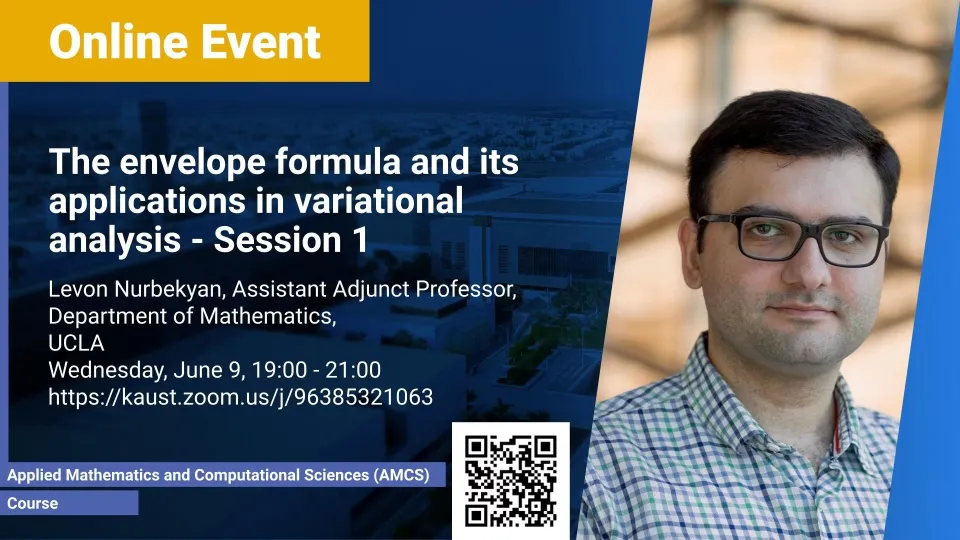Events
Oct 10 - Oct 16, 2021
Theory and Application of Neural Networks I
Jinchao Xu, Affiliate Professor of Information Sciences and Technology, Penn State University
B4 B5 A0215
Present and Future of Reconfigurable Intelligent Surface-Empowered Communications
Ertugrul Basar, Associate Professor, Electrical and Electronics Engineering, Koç University
KAUST
Oct 3 - Oct 9, 2021
Bitcoin and decentralized protocols
Ricardo Pérez-Marco, Visiting Professor at KAUST, CNRS researcher in Paris
B9 R2322 H1
Sep 26 - Oct 2, 2021
Frequency Control and stability for Low-Inertia Systems
Ha Thi Nguyen, Assistant Research Professor, Electrical and Computer Engineering, University of Connecticut
KAUST
Randomized multilevel Monte Carlo for inference
Kody J.H. Law, Professor, Applied Mathematics in the Department of Mathematics, University of Manchester and Manchester Institut
KAUST
Towards Secure and Resilient Cyber-Physical Energy Systems - 2021-09-27
Charalambos Konstantinou, Assistant Professor, Computer Science, Electrical and Computer Engineering
B9 R2322 H1
Sep 19 - Sep 25, 2021
Network-based clustering approaches for integrative multiomics data and drug response prediction
Zehor Belkhatir, Senior Lecturer, Control Engineering, De Montfort University
B1 L2 H2
Sep 12 - Sep 18, 2021
Audio Event Recognition for Automatic Acoustic Monitoring
Farook Sattar, Electrical and Computer Engineering, University of Victoria, Canada
KAUST
Developing Aramco’s Next Generation Operational Systems for the Red Sea and the Arabian Gulf
Ibrahim Hoteit, Professor, Earth Science and Engineering
KAUST
Sep 5 - Sep 11, 2021
Finite element approximation of fluid-structure interactions: a fictitious domain approach
Lucia Gastaldi, Professor, Numerical Analysis at the University of Brescia, Italy
B1 L4 R4102
A Toolkit for Multi-Faceted Geospatial Data Protection in Transactional and Analytical Processing using Searchable Encryption and Differential Privacy
Gabriel Ghinita, Associate Professor, University of Massachusetts, Boston
B9 R2322 H1
Microwave Water Cut Sensors for Oil Industry: From Design to Deployment in the Field
Muhammad A. Karimi, Chief Technology Officer, Saher Flow Solutions
KAUST
Aug 29 - Sep 4, 2021
Sequential Monte Carlo Algorithms for Agent-Based Models of Disease Transmission
Jeremy Heng, Applied Mathematics and Computational Sciences (AMCS), ESSEC Business School, Singapore
KAUST
Aug 15 - Aug 21, 2021
Machine Learning in Healthcare: When Low Sample Size is not a Limitation
Dr. Ricardo Henao, Biostatistics and Bioinformatics, Duke University
KAUST
Aug 8 - Aug 14, 2021
Jul 25 - Jul 31, 2021
Jul 4 - Jul 10, 2021
State Estimation for Nonlinear Dynamical Systems: Methods and Applications | Part 2C
Prof. Ali Zemouche, Université de Lorraine and Khadidja Chaïb Draa, TechnOptiz
KAUST
State Estimation for Nonlinear Dynamical Systems: Methods and Applications | Part 2B
Prof. Ali Zemouche, Université de Lorraine and Khadidja Chaïb Draa, TechnOptiz
KAUST
State Estimation for Nonlinear Dynamical Systems: Methods and Applications | Part 2A
Prof. Ali Zemouche, Université de Lorraine and Khadidja Chaïb Draa, TechnOptiz
KAUST
Jun 27 - Jul 3, 2021
State estimation for nonlinear dynamical systems: Methods and applications | Part 1C
Prof. Ali Zemouche, Université de Lorraine and Khadidja Chaïb Draa, TechnOptiz
KAUST
State Estimation for Nonlinear Dynamical Systems: Methods and Applications | Part 1B
Prof. Ali Zemouche, Université de Lorraine and Khadidja Chaïb Draa, TechnOptiz
KAUST
Jun 13 - Jun 19, 2021
The envelope formula and its applications in variational analysis - Session 3
Adjunct Prof. Levon Nurbekyan, Department of Mathematics at UCLA
KAUST
Learning over Graphs
Ali H. Sayed, Dean of Engineering, EPFL Switzerland
KAUST
The envelope formula and its applications in variational analysis - Session 2
Adjunct Prof. Levon Nurbekyan, Department of Mathematics at UCLA
KAUST
Jun 6 - Jun 12, 2021
An introduction to bifurcation theory and applications to MFG - Session 2
Marco Cirant, Assistant Professor, Mathematic Department, University of Padova, Italy
KAUST
The envelope formula and its applications in variational analysis - Session 1
Adjunct Prof. Levon Nurbekyan, Department of Mathematics at UCLA
KAUST
An introduction to bifurcation theory and applications to MFG - Session 1
Marco Cirant, Assistant Professor, Mathematic Department, University of Padova, Italy
KAUST

